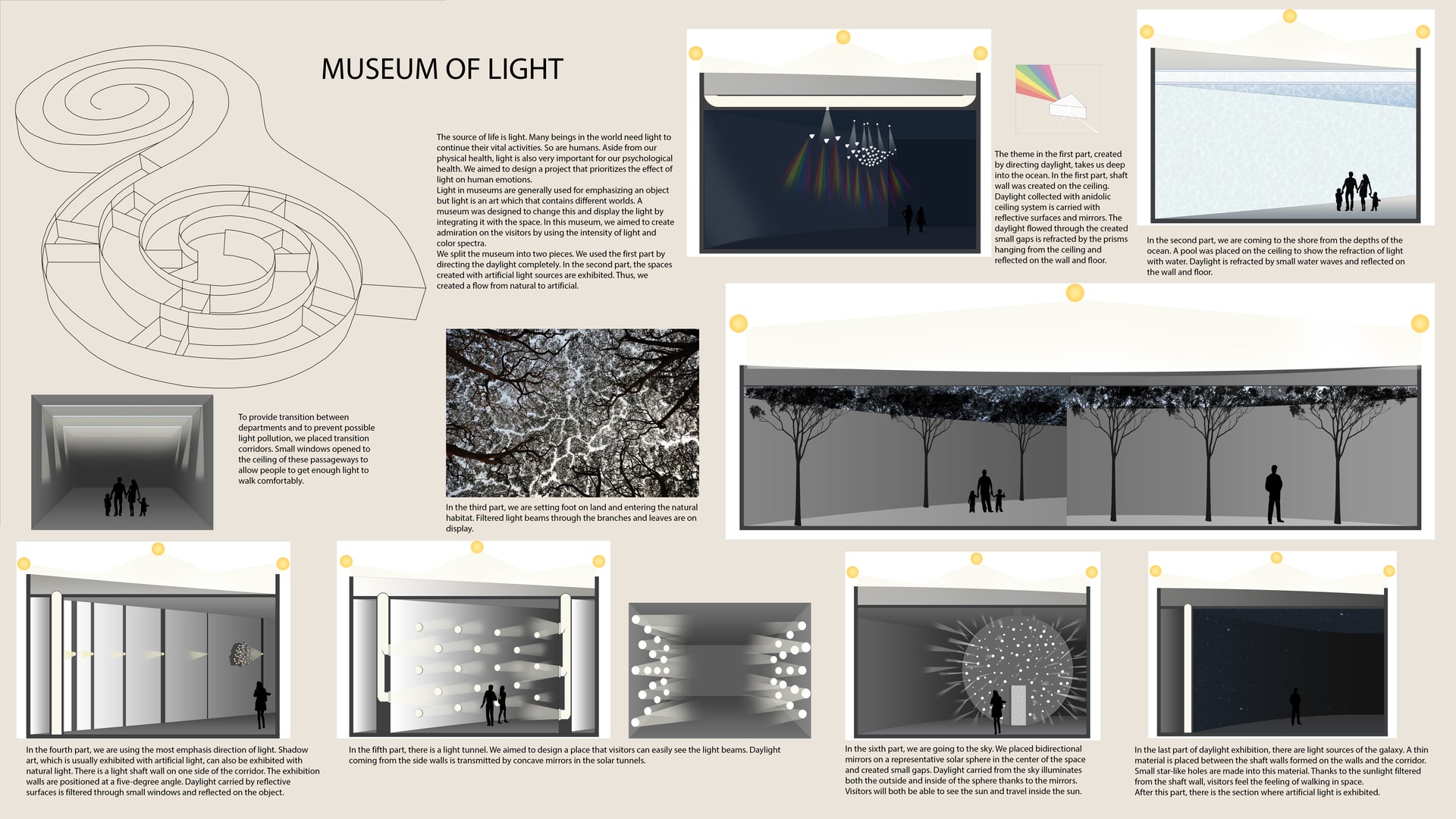Project Description
The source of life is light. Many beings in the world need light to continue their vital activities. So are humans. Aside from our physical health, light is also very important for our psychological health. We aimed to design a project that prioritizes the effect of light on human emotions. Light in museums are generally used for emphasizing an object but light is an art which that contains different worlds. A museum was designed to change this and display the light by integrating it with the space. In this museum, we aimed to create admiration on the visitors by using the intensity of light and color spectra. We split the museum into two pieces. We used the first part by directing the daylight completely. In the second part, the spaces created with artificial light sources are exhibited. Thus, we created a flow from natural to artificial. To provide transition between departments and to prevent possible light pollution, we placed transition corridors. Small windows opened to the ceiling of these passageways to allow people to get enough light to walk comfortably. The theme in the first part, created by directing daylight, takes us deep into the ocean. In the first part, shaft wall was created on the ceiling. Daylight collected with anidolic ceiling system is carried with reflective surfaces and mirrors. The daylight flowed through the created small gaps is refracted by the prisms hanging from the ceiling and reflected on the wall and floor. In the second part, we are coming to the shore from the depths of the ocean. A pool was placed on the ceiling to show the refraction of light with water. Daylight is refracted by small water waves and reflected on the wall and floor. In the third part, we are setting foot on land and entering the natural habitat. Filtered light beams through the branches and leaves are on display. In the fourth part, we are using the most emphasis direction of light. Shadow art, which is usually exhibited with artificial light, can also be exhibited with natural light. There is a light shaft wall on one side of the corridor. The exhibition walls are positioned at a five-degree angle. Daylight carried by reflective surfaces is filtered through small windows and reflected on the object. In the fifth part, there is a light tunnel. We aimed to design a place that visitors can easily see the light beams. Daylight coming from the side walls is transmitted by concave mirrors in the solar tunnels. In the sixth part, we are going to the sky. We placed bidirectional mirrors on a representative solar sphere in the center of the space and created small gaps. Daylight carried from the sky illuminates both the outside and inside of the sphere thanks to the mirrors. Visitors will both be able to see the sun and travel inside the sun. In the last part of daylight exhibition, there are light sources of the galaxy. A thin material is placed between the shaft walls formed on the walls and the corridor. Small star-like holes are made into this material. Thanks to the sunlight filtered from the shaft wall, visitors feel the feeling of walking in space. After this part, there is the section where artificial light is exhibited.
